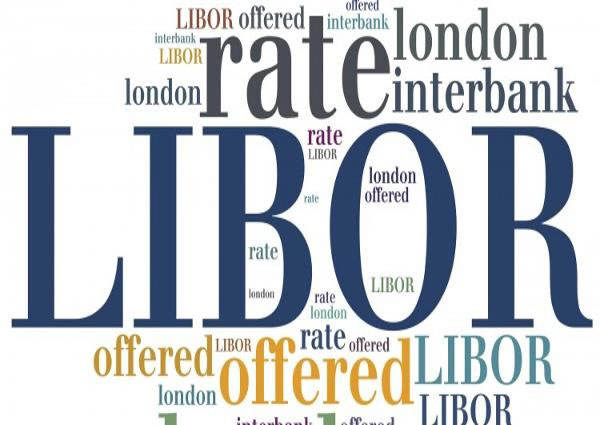
By Ted Howard
Banks are still using the London Interbank Offered Rate but SOFR is slowly gaining traction.
The members of NeuGroup’s Bank Treasurers’ Peer Group (BTPG) recently heard Chatham Financial discuss the switch from Libor to SOFR on their Q3 interim conference call. The big takeaway is that Libor remains firmly embedded in a lot of transactions, and even though banks understand that the tainted benchmark will disappear in the near future, the transition is inching along slowly. This could be because the shift is seen as a heavy lift given the low liquidity levels in the SOFR market.
“Here we are in September of 2019, and I would say that across our client base we really haven’t seen clients pulling away from Libor-based products in advance of the 2020-21 time frame with as much urgency as some have advocated for,” said Andrew Little, managing director at Chatham Financial. “As a matter of fact, given the shape of the curve, we’ve seen some clients actually extend the duration of their Libor exposure well out to seven years, 10 years and beyond.”
Nonetheless, Mr. Little said, “We have definitely seen a meaningful uptick in non-LIBOR-based balance sheet hedging.”
SOFR and the credit component. Todd Cuppia, managing director at Chatham Financial, agreed the elevated market volatility and the shape of the curve have increased the amount of hedging activity. He said around 75% of the macro trades that Chatham executes for its bank clients are still pointing to Libor, which he said was a “pretty meaningful departure” from what those statistics were a year ago, when close to 95% of balance sheet hedging referenced the LIBOR index. “Now there is an encouraging percentage of the activity we see going toward fed funds as an index, and eventually we expect SOFR once it becomes more viable from a liquidity standpoint,” Mr. Cuppia said. “I think ultimately from what we can tell, banks want a clear path forward on how to operate in the period before Libor goes away as well as clarity on fallback mechanics.”
Chatham pointed out, as have others, that the one thing that could engender better SOFR uptake would be some type of credit component that could be added to SOFR. Chatham reports that there is a strong interest from the market in developing one soon, although the path forward is still unclear.
“I think most of the [Libor-SOFR] conversation reduces in some way to the desire to replicate the time-varying credit spread that is inherent in Libor,” Mr. Cuppia noted. That reality has increased the relevancy of what he calls the “alternative alternative reference rates.” The two leading contenders are Ameribor and the ICE Bank Yield Index. Things to know here, he said, include:
- Take comfort. For longer-dated Libor contracts, banks and the market may take some comfort from the fact that the historical spread method has already started to be priced into the forward curves. By that measure, “some may say that the transition is becoming priced in to the extent you believe that current basis markets and historical averages are going to be in range of what the different working groups have suggested, which was a multiyear average or median of those rates,” Mr. Cuppia said.
- “If you look at fed funds as a reasonable proxy for SOFR and you look at the basis between fed funds and Libor, you can see a pretty meaningful decline in those basis rates to what could be a fair representation of their historical average,” he said. “I believe that’s what could be guiding the thinking of those who are using those much longer-term Libor contracts relative to what their alternatives may be.”
- Standards that simplify. Mr. Cuppia said another issue that merits deeper attention is a recent change in the hedge accounting standard that has made it significantly easier for institutions to hedge fixed-rate exposures. “This relief is just in time for the Libor transition and so to the extent that there is concern around hedges using Libor, which have these fallback risks, it’s very simple to use a non-Libor index. We’ve seen a meaningful increase in the use of non-Libor derivatives on our macro hedging desk.”
- Product development. To that end, one of the things that Chatham is working on is how to think about replicating some of the option products that exist for Libor in a SOFR world. Mr. Cuppia said there isn’t a lot of clarity yet, but markets received some good news recently when the CME Group announced it will begin to trade options on SOFR futures beginning in January. “This could be the beginning of the development of the volatility complex, which is important for balance sheet hedging and broader risk management processes,” Mr. Cuppia said.
- Go fixed rate. One theme that Chatham is seeing is an increased interest in hedging fixed-rate loans. “Users were in a sense sidestepping the development of these alternative reference rates and how to calculate the appropriate spread through the different economic cycles, and using a more plain-vanilla balance sheet hedging strategy allowing portfolio managers to take the risks they want on the asset side without getting their asset-liability picture off-kilter, so to speak,” Mr. Cuppia said.
All this has led to many questions, according to Chatham. For instance:
- How will Ameribor develop now that there is both a cash and futures market? How will the ICE US Bank Index develop?
- How will both connect with what the International Swaps and Derivatives Association (ISDA) will say should be the credit component on interest-rate swaps?
There remains a lot to keep track of as we transition from Libor to an alternative reference rate. We know that SOFR is certainly an alternative with strong support from the Fed, and it seems as if it will be up to the market to collectively determine the outcome of the credit component. This transition will not only be keenly watched by bank treasurers, but also by corporate treasurers who have assets and liabilities currently referenced to Libor. Stay tuned!
Libor Exposure Breakdown
The value of all financial products tied to US dollar Libor is about $200 trillion, according to the New York Federal Reserve. This amount, which the Fed estimates is roughly 10 times US GDP, includes $3.4 trillion of business loans, $1.8 trillion of floating-rate notes and bonds, another $1.8 trillion of securitizations and $1.3 trillion of consumer loans, most of which are residential mortgage loans. The remaining 95% of exposures are derivative contracts.


